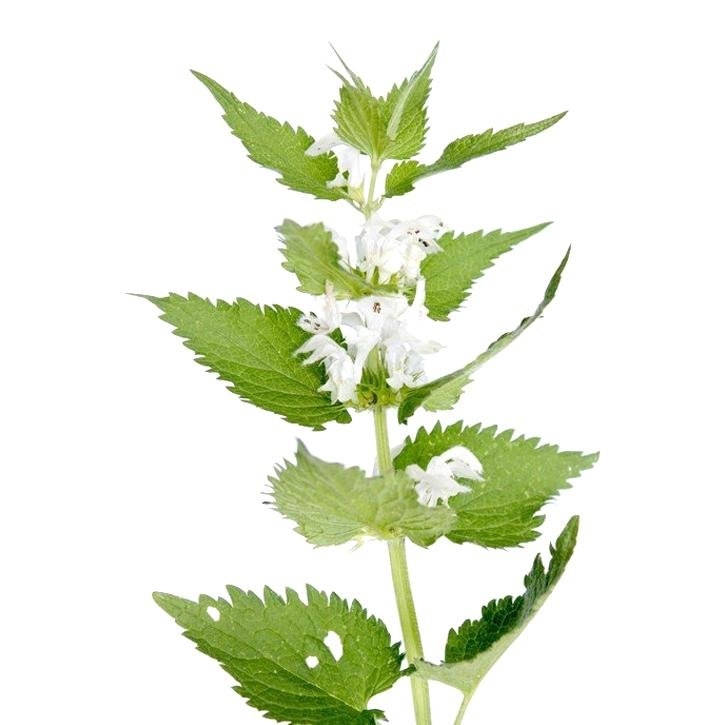Also known as dead nettle, it is a perennial herbaceous plant, native to Europe that grows in the undergrowth on wastelands and roadsides.
The stem, 50-100 cm tall, is angular with opposite cordate leaves and serrated edges of intense green color. The flowers are white with bilabiate corolla characteristic of the labiate, and are arranged around the apex in several tiers, with the bracts attached to the central stem.
Due to its name and the similarity in the appearance of the leaves, it is often associated with the greater nettle or green nettle, although they belong to different families, Lamiaceae in the case of the white nettle and urticaceae in the case of the greater nettle, and the white nettle lacks the characteristic stinging (irritating) hairs of the greater nettle.
Flowering tops.
Pregnancy and lactation.
No special precautions at the recommended doses.
None have been described.
At recommended doses no side effects are expected.
-.Monografía de la SEFIT (Sociedad Española de Fitoterapia).
-.J. Bruneton. Farmacognosia. Fitoquímica. Plantas Medicinales. Editorial Acribia, 2ª edición.
-.J.D. Pamplona Roger. Enciclopedia de las Plantas Medicinales. Volumen 2. Editorial Safeliz.
-. Tahere Kelayeh , Mahmood Abedinzade, Ahmad Ghorbani. A review on biological effects of Lamium álbum (white dead nettle) and its components. Journal of Herbmed Pharmacology. 2019; 8(3): 185-193.
-.E. Kh:Botirov. Flavonoids and phenolcarboxylic acids from Lamium album. Chemistry of Natural Compounds, Vol. 55, Nº 6, November 2019.
-.Tahir Shah, Fazlullah Khan, Mohammed Bule, Kamal Niaz. White dead nettle (Lamium album). Nonvitamin and Nonmineral Nutritional Supplements, 2019, pages 455-459.
